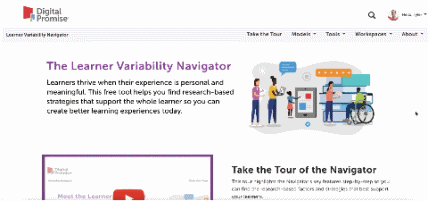Model Assignment or Skill
Overview
By talking through their thinking at each step of a process, teachers can model what learning looks like. Showing students that teachers, too, are learners who struggle and persist through challenging work also models the importance of continuous growth. Observing thought processes and expected behaviors also helps students feel supported in their learning.
Example: Use This Strategy In in the Classroom
Design It into Your Product
Factors Supported by this Strategy
More Teacher Modeling & Support Strategies
Teachers support language development by using and providing vocabulary and syntax that is appropriately leveled (e.g.
Content that is provided in clear, short chunks can support students' Working Memory.
Building positive and trusting relationships with learners allows them to feel safe; a sense of belonging; and that their academic, cognitive, and social and emotional needs are supported.
Teaching students how to label, identify, and manage Emotion helps them learn Self-regulation skills.
Actively and authentically encouraging all students to seek support, ask questions, and advocate for what they believe in creates a safe space for risk-taking and skill development and supports a Sense of Belonging.
Teachers can help students understand that learning involves effort, mistakes, and reflection by teaching them about their malleable brain and modeling their own learning process.
Providing feedback that focuses on the process of developing skills conveys the importance of effort and motivates students to persist when learning.
Teachers sharing math-to-self, math-to-math, and math-to-world connections models this schema building.
Maintaining consistent classroom routines and schedules ensures that students are able to trust and predict what will happen next.
Providing students a voice in their learning is critical for making learning meaningful.
Wait time, or think time, of three or more seconds after posing a question increases how many students volunteer and the length and accuracy of their responses.








